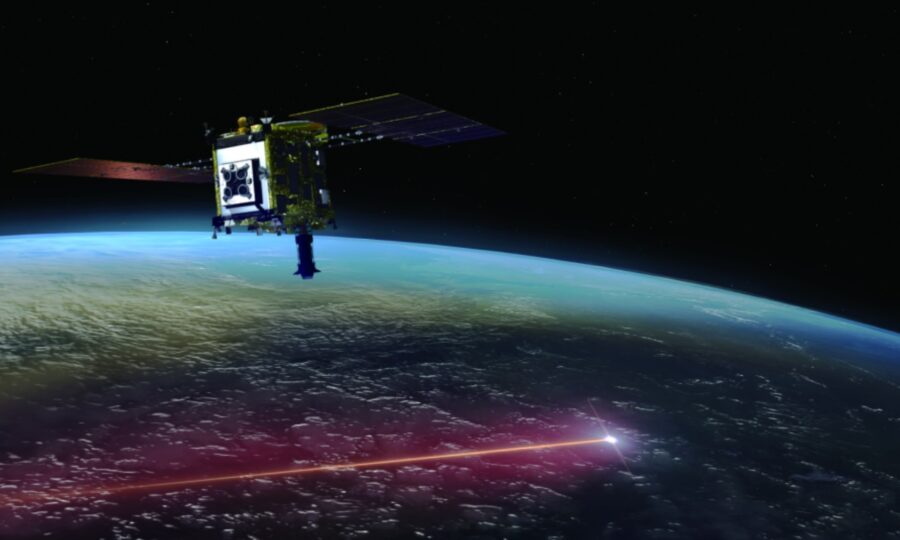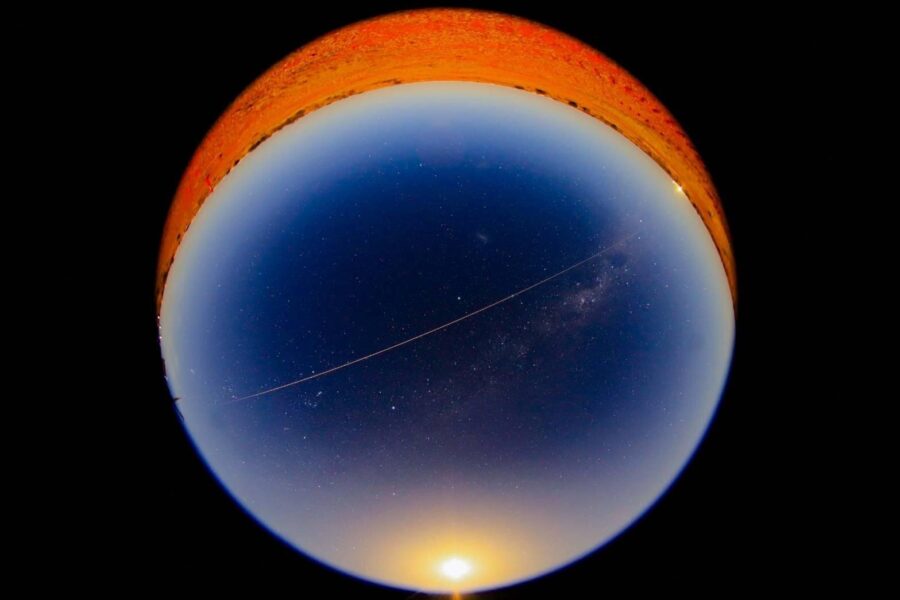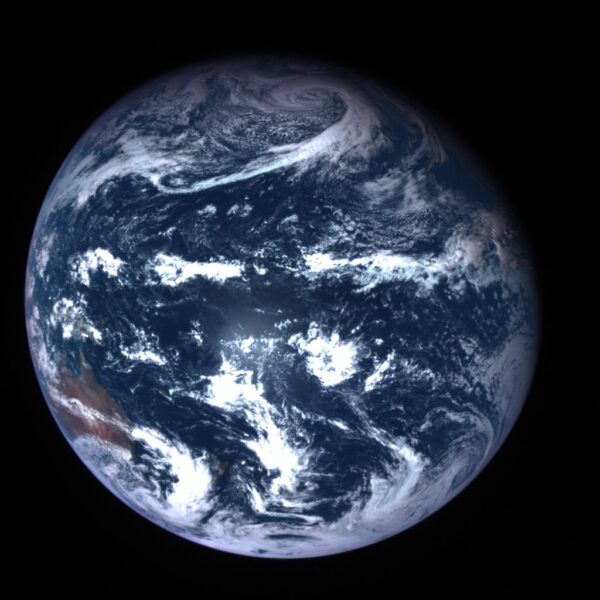The predawn operation to recover the Hayabusa 2 sample-return capsule in the Australian Outback was a success.

JAXA
After a six-year journey of 5.24 billion kilometers (3.26 billion miles), the Japanese Aerospace Exploration Agency (JAXA) mission Hayabusa 2 returned to Earth on Saturday, December 5th, jettisoning its sample-return capsule during Earth flyby. Aboard: the precious “treasure chest,” containing samples of asteroid 162173 Ryugu.
“We started to develop Hayabusa 2 in 2011, and since then, the dream has come true,” says Hitoshi Kuninaka (ISAS/JAXA) during a (translated) press conference. “We performed the mission 100%… and the operations team did a very good job.”
The capsule in the Australian outback.
Magnificent images have been released from today's discovery and recovery of the #Hayabusa2 sample return capsule in the Woomera Prohibited Area, South Australia.
📷 @JAXA_en @haya2e_jaxa. pic.twitter.com/2JaqxhMB7n
— Australian Space Agency (@AusSpaceAgency) December 6, 2020
The sample release began at 5:30 Universal Time (UT), when the capsule separated from the spacecraft. Spinning once every three seconds, the capsule hit Earth’s atmosphere at 12 kilometers per second (27,000 mph). JAXA astronaut Soichi Noguchi actually saw the capsule from aboard the International Space Station. The Saji Observatory in Japan also sighted both the spacecraft and capsule flying together through space, shortly after separation.
Reentry return is always a difficult time for any mission team: Many in the space community still remember the tragic return of NASA's Genesis capsule in 2004, when the capsule’s drogue chute failed to deploy and the capsule slammed to the ground at the Utah Test Range.

JAXA
Sample in Hand
The recovery of Hayabusa 2's capsule, however, went as planned. The capsule blazed its way over the Australian Outback in the early dawn hours for touchdown over the Woomera Prohibited Area in southern Australia. Atmospheric entry started at 17:28 UT on December 5th. The capsule deployed its radar-reflective parachute, ejected its heat shield, and activated its radio beacon, signaling that it was healthy and ready for the awaiting search teams.
Capsule collection! The helicopter team immediately flew to the location identified by the DFS team. They searched for the fallen capsule by using radio waves and maps. Thank you very much!
(Collection Team M)#Hayabusa2#はやぶさ2#AsteroidExplorerHayabusa2 #HAYA2Report pic.twitter.com/KSyEbnU3Yd— HAYABUSA2@JAXA (@haya2e_jaxa) December 6, 2020
The teams located and collected the capsule after a brief helicopter search, then transported it to a facility in Woomera for a "quick-look" inspection. The capsule and its contents will now head to Japan, for opening at a later date. The team confirmed that the container was properly sealed.
“On behalf of everyone in Australia, congratulations to the entire team at JAXA on a wonderful achievement,” says Megan Clark (Australian Space Agency) during a recent press conference. “I also congratulate the team in Australia and offer my deep admiration for the project team in Japan.”
The sample of pristine asteroid material represents a look back to the early solar system. The spacecraft collected the sample by firing a tantalum projectile at Ryugu's surface, drawing ejected material into the spacecraft’s feed horn. Then the mission obtained a second, sub-surface sample using the spacecraft's Small-Carry-on Impactor.
Hayabusa 2 also deployed the first-ever asteroid rovers Rover 1A (HIBOU), Rover 1B (OWL), along with the MASCOT lander.
There’s no word yet as to just how much material Hayabusa 2 collected, as that precise weighing will await the sample's arrival in Japan later on December 7th. The target mass was 100 milligrams of material. JAXA has been providing updates on the sample collection on its website.
The sample return will ultimately be stored at JAXA’s Extraterrestrial Sample Collection Center, along with the tiny shards of 25143 Itokawa collected by Hayabusa 1. These samples are available for international scientists by request.
Hayabusa 2: Extended Mission
After releasing the sample, Hayabusa 2 performed a short correction maneuver to fly past Earth. JAXA approved an extended mission for the mission this past September: The spacecraft will make a high-speed flyby of asteroid 2001 CC21 in 2026, then rendezvous with the 30-meter asteroid 1998 KY26 in 2031, after two more Earth flybys in 2027 and 2028. On its way, Hayabusa 2 will conduct exoplanet and zodiacal light observations.
Hayabusa 2 still has one target marker left and may touch down on 1998 KY26 at the end of its mission.

JAXA
The extended mission will make Hayabusa 2 the first to explore a fast-rotating asteroid — 1998 KY26 rotates on its axis once every 10.7 minutes.
Sample-return missions abound these days: China’s Chang’e 5 mission will bring its lunar sample back next week, re-entering over Dorbod Banner in Inner Mongolia. NASA’s Osiris-REX mission will also return to Earth with recently collected samples of 101955 Bennu on September 24, 2023. And NASA and ESA have recently approved a multi-piece plan to move forward with sample collections from Mars.
Congrats to JAXA, and the continuing success of the Hayabusa 2 mission.
 1
1









Comments
Andrew James
December 7, 2020 at 4:37 pm
This event was very well covered in Australia, and was a terrific example of cooperation between nations. Japanese Professor Masaki Fujimoto responsible for the mission recovery was a true standout, whose enthusiasm and willingness to promote the JAXA mission and the fledgling Australian space science industry was much appreciated. Thanks for reporting this story here.
You must be logged in to post a comment.
You must be logged in to post a comment.